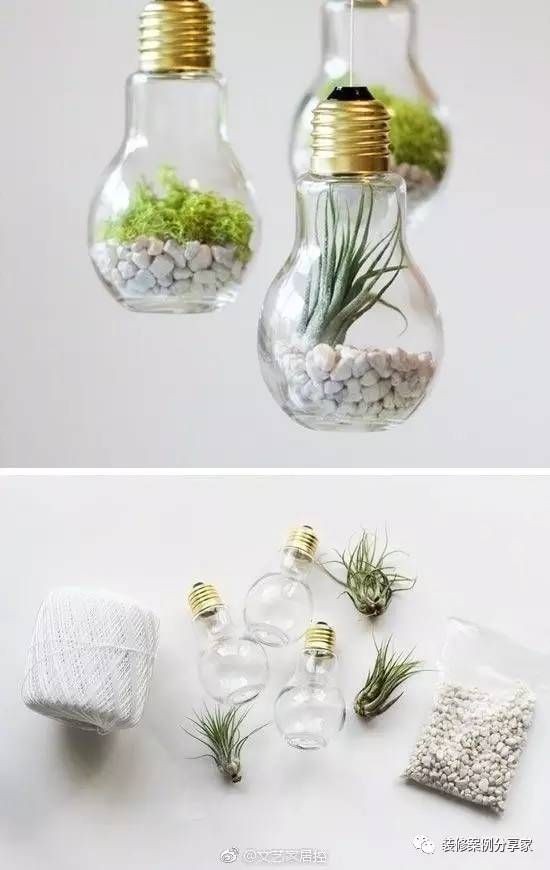小程序的基础心得
保湿是所有护肤程序的基础 #生活知识# #生活小知识# #化妆技巧与美容# #面部保养知识#
page
page是小程序的主体内容部分。小程序的页面全部都放在page文件夹下。
utils
utils中的utils.js是写好了的时间js。你可以在其他页面中调用,你就可以获取当前的时间。
例子:
js中:
var util = require('utils.js的路径');
Page({
data: {
},
onLoad: function () {
//调用函数时,传入new Date()参数,返回值是日期和时间
var time = util.formatTime(new Date());
//再通过setData更改Page()里面的data,动态更新页面的数据
this.setData({
time: time
});
}
})
wxml中:
<view>{{time}}</view>
app.js
app.js是用来保存全局变量的一个地方
app.json
app.json中的pages是用来保存所有页面的路径。这样你就可以不用像在html中还要去引用css和js。小程序自动地帮你引用好了。但是有一点是要注意的:pages中的路径不用写后缀名。比如:"pages/index/index"。
app.json中的window是用来设置顶部导航栏的样式的。
例子:
"window":{
"backgroundTextStyle":"light",
"navigationBarBackgroundColor": "#333d9c",
"navigationBarTitleText": "天宁区互联网12315平台",
"navigationBarTextStyle":"white"
}
但是如果你想要改变某个页面的导航栏的名称,直接在那个页面中的json在写:"navigationBarTitleText" : "个人中心"
app.json中的tabBar是用来设置底部tab栏
例子:
"tabBar":{
"color": "#816c5b",
"backgroundColor": "#fff",
"selectedColor": "#38429f",
"list":[
{
"pagePath":"pages/index/index",
"text":"首页",
"iconPath":"/image/home02.png",
"selectedIconPath":"/image/home.png"
},
{
"pagePath":"pages/newPersonalCenter/newPersonalCenter",
"text":"个人中心",
"iconPath":"/image/member.png",
"selectedIconPath": "/image/member02.png"
}
]
}
app.wxss
app.wxss是保存全局的样式。你直接在页面中用class就可以了。
project.config.json
project.config.json是用来保存项目的配置文件的。在普通编译中你可以选择添加编译模式,添加你想要直接看到的页面,这个时候project.config.json就会发生变化。
小程序的图片
小程序的图片需要你在外部进行添加,就是要在image文件夹中添加。值得注意的是小程序中,如果你想用背景图,你的背景图的属性写在wxcss中是无效的。你可以选择写在wxml中,比如:在wxmlz中的style写:background-image:url("背景图片的路径");background-report:no-report;background-size:100%;
小程序wx:if wx:for
wx:if
在框架中,使用 wx:if="{{condition}}" 来判断是否需要渲染该代码块:
<view wx:if="{{condition}}"> True </view>
也可以用 wx:elif 和 wx:else 来添加一个 else 块:
<view wx:if="{{length > 5}}"> 1 </view>
<view wx:elif="{{length > 2}}"> 2 </view>
<view wx:else> 3 </view>
三目<view wx:if="{{you?true:false}}"></view>
wx:for
在组件上使用 wx:for 控制属性绑定一个数组,即可使用数组中各项的数据重复渲染该组件。
默认数组的当前项的下标变量名默认为 index,数组当前项的变量名默认为 item
<view wx:for="{{array}}">
{{index}}: {{item.message}}
</view>
Page({
data: {
array: [{
message: 'foo',
}, {
message: 'bar'
}]
}
})
使用 wx:for-item 可以指定数组当前元素的变量名,
使用 wx:for-index 可以指定数组当前下标的变量名:
<view wx:for="{{array}}" wx:for-index="idx" wx:for-item="itemName">
{{idx}}: {{itemName.message}}
</view>
wx:for="{{downList}}" wx:key="" data-index="{{index}}" bindtap="downListTab"
下标: e.currentTarget.dataset.index
小程序的事件
小程序中的事件分为冒泡事件和非冒泡事件:
冒泡事件:当一个组件上的事件被触发后,该事件会向父节点传递。
非冒泡事件:当一个组件上的事件被触发后,改事件不会向父节点传递。
wxml的冒泡事件有很多种,详细的见小程序开发文档。但用的最多的是tap,tap是手指触摸后马上离开。
事件绑定:
bind:bind事件绑定不会阻止冒泡事件向上冒泡
catch:catch事件绑定可以阻止冒泡事件向上冒泡
小程序的页面跳转
小程序的页面跳转最常用到的是:
1、wx.navigateTo 这个是父级页面跳转到子级页面,可以返回上级页面
2、wx.redirectTo 这个是平级跳转,不可以返回上级页面
3、wx.switchTab 这个是跳转到tabBar页面、
4、wx.navigateBack 这个是从子级页面跳转到父级页面
小程序的轮播
小程序的轮播很简单,就是用小程序中的swiper组件。
例子:
wxml:
<swiper class='swiperContent' indicator-dots="true" autoplay="true" circular="true" indicator-color="rgba(0, 0, 0, 0.45)" indicator-active-color="#28A1EA" interval="3000" duration="500">
<swiper-item bindtap='videoTap' wx:for="{{swiperImgContent}}" wx:key="swiperImg">
<image src='{{item.swiperImg}}' class='swiperImg'></image>
</swiper-item>
</swiper>
js:
onLoad: function(options){
var swiperImgContent=[
{ swiperImg: "/image/swiper01.jpg"},
{ swiperImg: "/image/swiper01.jpg"},
{ swiperImg: "/image/swiper01.jpg"}
]
this.setData({
swiperImgContent : swiperImgContent
});
}
template
template只是一个占位符,在页面响应的时候,template就会消失。template上不能加事件函数
在要引用的wxml中写:
<import src="template的wxml的路径"/>
<template is="template的name" data="{{item}}"/>(data是用来做数据传递的)
比如:
<block wx:for="postList">
<template is="template的name" data="item"/>(如果这里写...item那template里的数据绑定就不要写item.了)
</block>
在要引用的wxss中写:
@import "template的wxss的路径";
!!!js在template中是无效的
自定义属性
自定义属性必须以data开头然后用“-”来连接单词。“-”可以是多个
data-自定义单词="{{}}"
data-自定义单词-自定义单词2="{{}}"
命名要驼峰命名
<view class='scenicBox' wx:for="{{scenicArr}}" data-scrollName="{{item.name}}" bindtap='scenicTap'>
<image class='scenicIcon' src='{{item.icon}}'></image>
<text class='scenicTitle'>{{item.name}}</text>
</view>
JS调用:
var scrollName = e.currentTarget.dataset.scrollname;
驼峰命名在js调用的时候第二的单词首字母小写
全局变量
在app.js中定义全局变量
globalData:{
userInfo:null
}
var app=getApp(); // 取得全局App
app.globalData.userInfo = res.data.data.uid // 取得全局变量需要的值
userId: getApp().globalData.userInfo // 获取全局变量并赋值给userId
传值
url传值父级页面到子级页面
onPostTap: function(e){
var postId = e.currentTarget.dataset.postid;(currentTarget:当前鼠标去点击的组件。对应到这个事例就是view。dataset:所有自定义属性的集合。postid:i要用小写,大写是没有用的,自动转化成小写)
wx.navigateTo({
url:"post-detail/post-detail?id="+postId
})
传多个参数:
wx.navigateTo({
url: 'scroll/lishui/lishui?cityId=' + cityId + '&code=' + code,
})
接收
onLoad:function(option){
var postId = option.id;
}
缓存(子级页面到父级页面)
子级页面
wx.setStorageSync('缓存的名称',需要缓存的数据)
父级页面
var 缓存的名称 = wx.getStorageSync('缓存的名称')
this.setData({
父级页面数据名称 : 缓存的名称
})
全局的app对象
例子:
app.js
App({
appData:{
// 账户信息
account: ''
}
})
保存数据的页面的js
var app = getApp();
Page({
data:{
userName: ' '
}
input中获取数据:
userNameInput: function(e) {
this.setData({
userName: e.detail.value
});
},
一个点击触发的事件函数中
var userName = this.data.userName;
// 保存用户名
app.appData.account = {
userName: userName
}
})
调用数据页面的js
var app = getApp();
Page({
data:{
userName: ' '
}
onShow: function(){
this.setData({
userName: app.appData.account.userName
})
}
})
调用数据的wxml
<view>{{userName}}</view>
小程序中的登录注册页面和个人中心页面的切换
在app.js中:
appData:{
userinfo: ' '
}
在个人中心js中:
onLoad:function(options){
if(app.appData.userinfo ===' '){
wx.redirectTo({
url:'登录注册页面的路径'
})
}else{
this,setData({
把注册的数据传过来
})
}
}
小程序定时器
小程序定时器是经常用到的,这边就单独的拎出来说一下
js:
countDown: function () {
let that = this;
let second = that.data.second;
that.setData({
timer: setInterval(function () {
second--;
that.setData({
second: second
})
if (second === 0) {
clearInterval(that.data.timer);
that.setData({
waitfinish: true,
finish: false
})
}
}, 1000)
})
},
onShow: function () {
this.countDown();
}
second是你在要用到的读秒,second先在data中声明一下。
网址:小程序的基础心得 https://www.yuejiaxmz.com/news/view/415901
相关内容
【微信小程序】基础篇小程序设计基本微信小程序的校园生活助手系统
基于微信小程序的中国各地美食推荐平台小程序
C 语言程序设计心得:编程之路的探索与收获
基于微信小程序的智能社区服务小程序,附源码
基于微信小程序的时间管理小程序
程序员是做什么的 零基础入门到精通,收藏这篇就够了
基础化妆教程
推荐一款小程序:HowToCookOnMiniprogram——程序员的美食秘籍!
心理学基础

